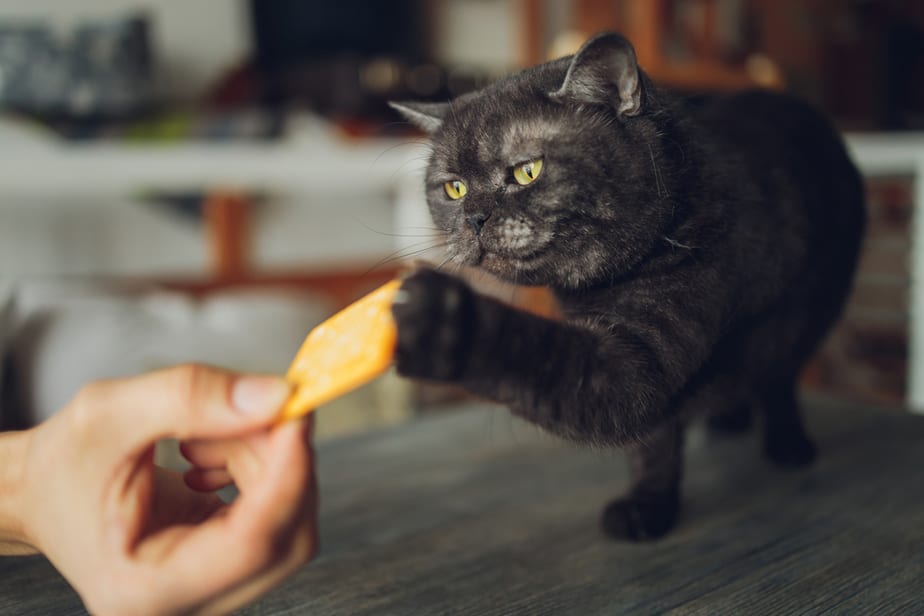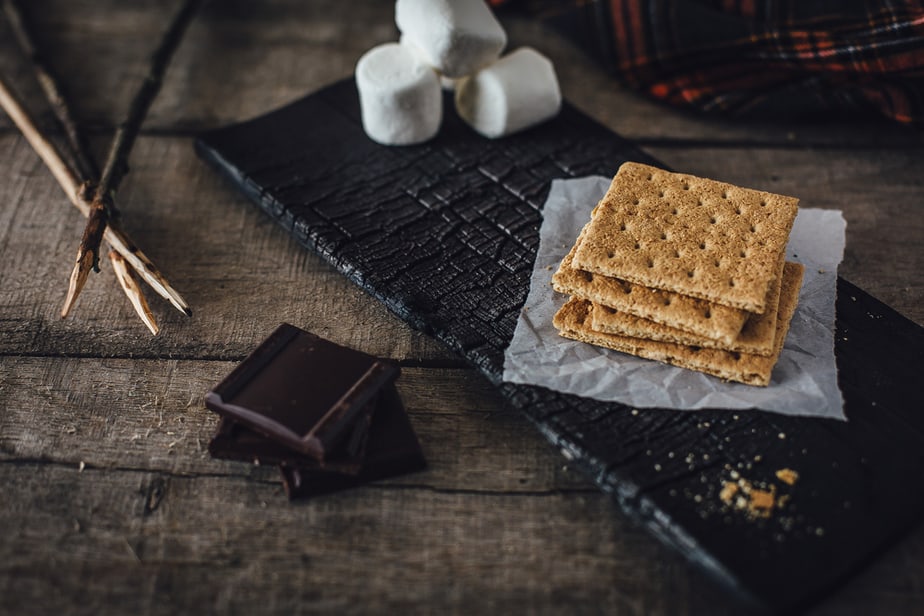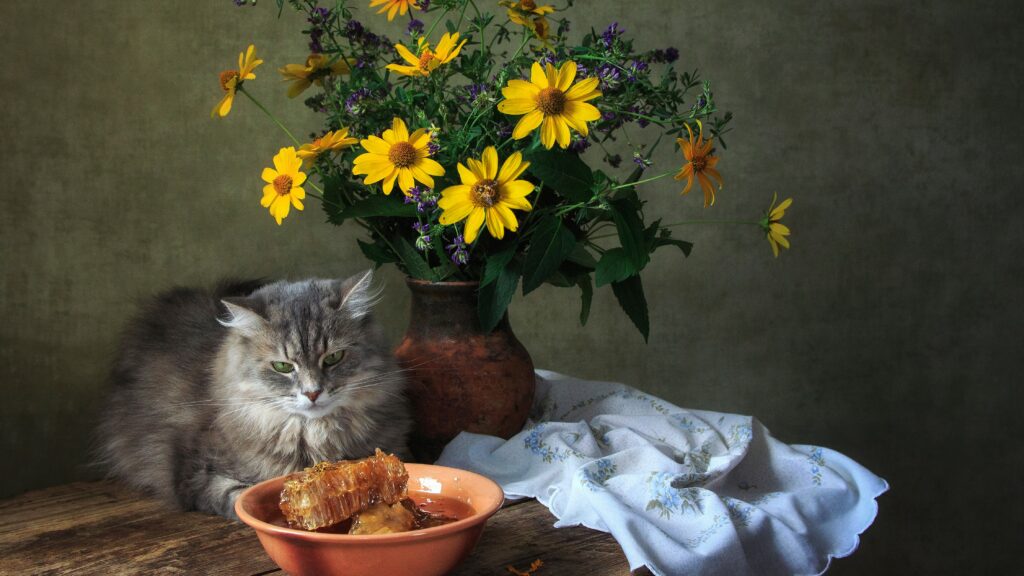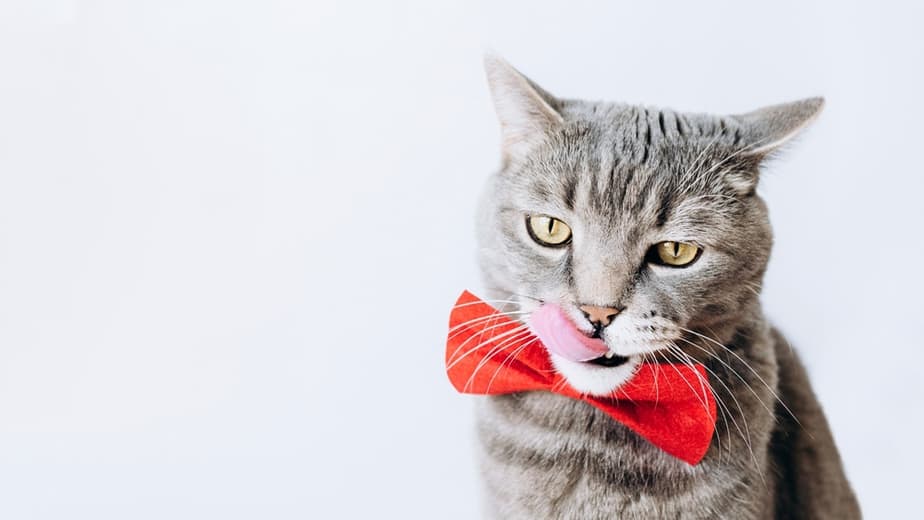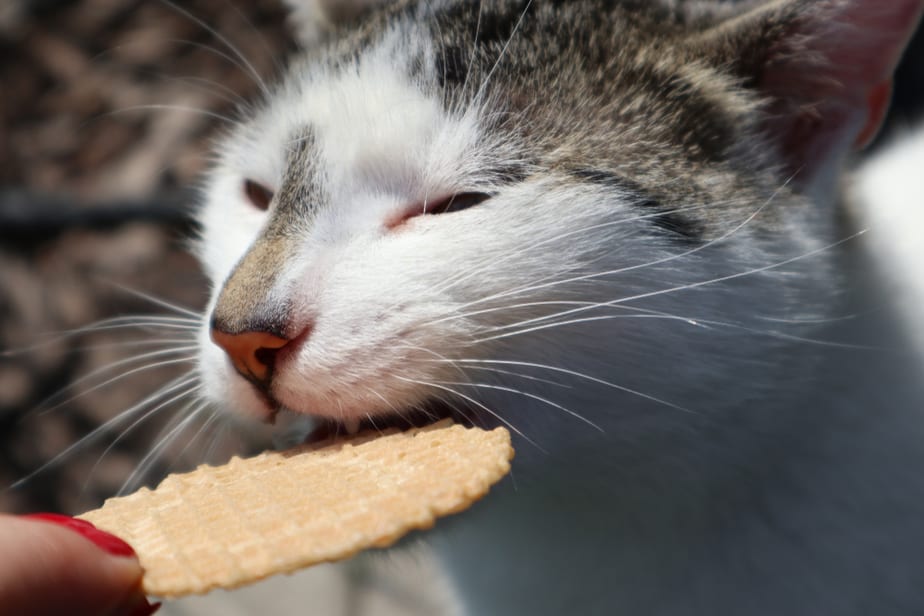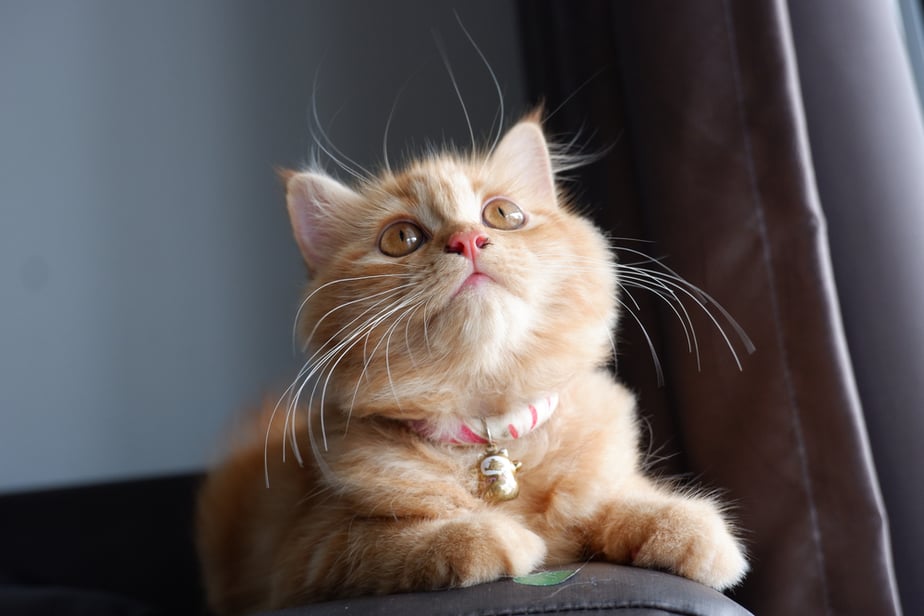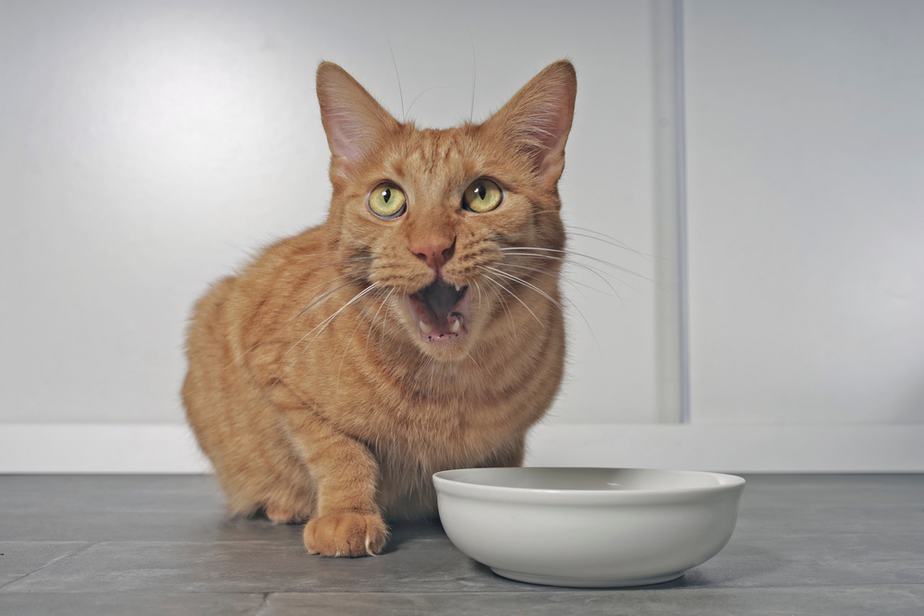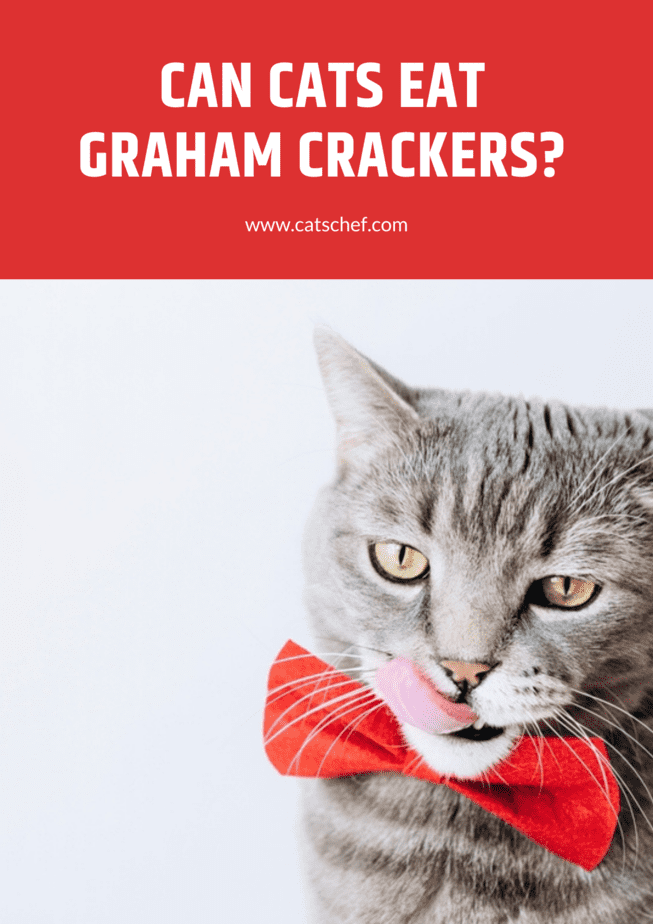📖 Table of Content:
- Are crackers safe for my cat?
- How and when to feed Graham crackers to cats
- What about honey-flavored Grahams?
- Are cinnamon-flavored Grahams safe for cats?
- Chocolate Graham crackers: Win the treat or take a defeat?
- What crackers or biscuits are safe for my cat?
- Can cats have treats made with Graham crackers?
- What can happen if cats eat Graham crackers?
- Purrfect alternatives to Graham crackers
These sweet, wholewheat cookies are a treat many people enjoy. The savory taste and that crunch can do wonders for a craving! It could also tempt you to share it with your kitten. But, can cats eat Graham crackers?
These baked goods can be found everywhere, and even serve as an ingredient in making other sweet treats. Cats, just like humans, love the sound of crunchy food. Before feeding your pet these crispy crackers, though, you should consider if they’re safe for her.
We know it’s not easy living with one of these piggish creatures, right? You’re always tempted to comply with their wishes. This includes granting them their wish of munching on Graham crackers.
Are crackers safe for my cat?
As a responsible owner, you will first weigh your options before giving your cat human food. You’re going to have to decide between those big, round eyes and her health.
Of course, we know which will prevail. If you asked your cat this same question, she’d probably disagree. No doubt she’ll use that “You only live once” motto. Maybe that’s one of the reasons felines aren’t able to talk – they don’t always make the best decisions!
However, cats are stubborn and will probably try communicating with you. If your fluff screams at your hands holding crackers, don’t resist the temptation.
While they’re not harmful to her, they should be given in moderation. They might taste wonderful, but make sure they’re nothing more than just a snack. This means that while Graham crackers are safe for your kitty, they don’t hold any quality nutrients.
How and when to feed Graham crackers to cats
This snack could become enjoyable for both your kitten and you. For example, watching your favorite series or just lounging on the sofa. Your Graham crackers in a bowl, and your lap occupied by a black hole. Those greedy monsters!
However, don’t get too engrossed in your TV show and overfeed your lap monster. While cats can eat Graham crackers, they surely won’t benefit from eating too many.
This tradition shouldn’t become an everyday thing for you either. Hanging out and cuddling with your furbaby after work is great. But, don’t be selfish trying to buy their love with human food. There are other, safer ways to spend quality time with your pet.
What about honey-flavored Grahams?
If you believe your cat will appreciate honey-flavored Grahams more than the regular ones, you’re wrong. Cats don’t care about it, because they lack the ability to taste sweetness.
Honey isn’t poisonous to cats, but your feline won’t appreciate it. She most likely won’t acknowledge your effort in offering her something sweet. While she can eat some of it, there’s a high chance of your cat developing obesity problems.
Especially if you’re keen on offering these snacks to your furkid time and again.
Honey is a great home remedy for humans and their immune systems. It’s good for our blood and can work as a healthier alternative to sugar.
It’s an energy booster and a great medical and culinary delicacy for humans. On the contrary, cats might disagree with that.
It’s not dangerous to your kitten, but it’s not necessarily recommended by vets. Because cats are obligate carnivores, they won’t get the same benefits from honey that humans do.
If you do decide to test out honey in your pet’s diet, the best option would be raw honey. Remember, when feeding honey to your cat, half of a tablespoon is more than enough. Otherwise, introducing honey to her diet can be of serious detriment to your fluff.
Are cinnamon-flavored Grahams safe for cats?
Another flavor that’s added to these square snacks is cinnamon. Whereas it tastes good to humans, it’s often the case that cats skip these.
Though cats can eat Graham crackers in moderation, cinnamon-flavored ones aren’t highly recommended. It may be a great sweetener for our taste, but there’s no guarantee cats will agree.
Can cats eat cinnamon, though?
Although the amount of cinnamon in these sweet cookies shouldn’t worry you, be on the lookout. It’s best if your cat dodges the opportunity to eat them.
Small portions of cinnamon likely won’t cause any damage to her health. But, beware if your cat somehow managed to ingest any larger amounts of it.
Cinnamon can lead to health conditions such as allergies and cinnamon toxicity. If any of these occur, make sure you get your pet appropriate medical treatment.
This is less common due to cinnamon being a natural repellent for cats. Your feline’s senses are heightened, and cinnamon is not her favorite.
Chocolate Graham crackers: Win the treat or take a defeat?
If you’re opening up a box of chocolate-flavored Grahams, be on guard. This pleasure-giving treat is often a reason for concern. Humans are gaining weight, but there’s something more dangerous than that.
Cats aren’t supposed to be eating this type of Graham cracker, and we’re sure you know why. Other than having no nutritional value, it’s a potential risk. You’re walking on thin ice if your cat has eaten some of these.
Is chocolate dangerous to cats?
Cats are sensitive creatures, even if sometimes it doesn’t appear to be so. What doesn’t kill you makes you stronger, right? Well, yes and no.
Chocolate can be lethal for felines. Caffeine and theobromine are the main factors for this unwelcome situation.
While cats aren’t usually drawn to sweets, especially chocolate, don’t encourage your feline to give in to this sweet pleasure. You can eat 1.55 oz of chocolate; your cat can too. The difference is in the outcome.
You’ll end up with a feeling of satisfaction, whereas your cat’s likely to end up at the vet’s office. Chocolate toxicity needs to be treated with the right therapy.
If you don’t want these hardships coming your and your feline’s way, steer clear of any type of chocolate. After all, the goal is to give our furry companions a healthy and happy life.
What crackers or biscuits are safe for my cat?
If you think crackers are equivalent to biscuits, you’re wrong. Biscuits are variations of quick bread, whereas crackers are thinner types of biscuits.
Other than being thinner, crackers are also more neutral and savory in taste. Biscuits, on the other hand, are generally sweet, as they contain higher levels of sugar than crackers.
Therefore, if weighing between these two, it’s better to go for crackers. Apart from being generally less sweet, they’re usually more crispy than biscuits.
1. Goldfish crackers: yes or no?
The short answer is yes. Felines are safe to munch down on these. As long as the intake is supervised, goldfish crackers don’t pose a threat to your pet’s health.
2. Teddy Grahams: treat or threat?
While they’re nontoxic to your fluff, they’re not very useful. When we say useful, we speak of nutritional value. And these crackers don’t hold any to your cat. So, if she can’t benefit from something, is it really worth trying?
3. Ritz crackers: a reason for concern?
These crackers are no reason for concern, whatsoever. If anything, they’re safe for your cat. But for the sake of your cat’s health, it’s better to rather opt for some meat-based treats.
Even though Ritz crackers aren’t a threat to your pet’s health, it’s best to keep them in the pantry. There’s a reason cats don’t eat crackers, and that’s the lack of nutrition.
4. Animal crackers: are they made for cats?
Be cautious because the name might be deceiving. Animal crackers aren’t crackers made for animals. They’re just crackers in animal shapes.
Although fun and interesting, they’re made for humans. The target market is children because of the entertaining shapes. This means they’re not a great prize for cats.
Animal crackers contain ingredients that could eventually become toxic to your feline. Some of these elements are salt and baking soda, which is a major thumbs-down for your pet.
5. Rice or cheese crackers: what’s up with them?
When in doubt, rice crackers are the better option for your feline. She can eat them safely, keeping in mind rice isn’t dangerous to cats.
Although brown rice is way healthier, bits of white rice crackers won’t hurt her. However, this isn’t the case with cheese crackers.
In spite of cats showing interest in cheese, remember the effect it has on her. Since cheese is a dairy product, it’s not the safest choice. Felines are lactose intolerant and while small amounts won’t cause her harm, larger quantities will.
Can cats have treats made with Graham crackers?
We can call these crackers multitasking ones. These snacks aren’t just what they seem to be. People often use them as an ingredient in other sweets.
They can be used in making pie crusts, ice cream toppings, and s’mores. These treats aren’t recommended for your feline because of the sweet content.
Although cats can eat Graham crackers, pie crusts are best avoided. The reason behind this is the content of butter and overall, high calories. This can result in diarrhea – and we all know how bad that can be.
Ice cream toppings may attract your kitty, but keep in mind your cat’s lactose intolerance. The outcome can easily be the same as after eating pie crust.
S’mores are a big no-no as well. Besides having no nutritional value to your feline, they’re a hazard to your pet. Ingredients such as chocolate and marshmallows are enough for your cat to develop health issues.
Yes, cats can eat Graham crackers in moderation. However, be careful when offering her any of the above-mentioned. The reason for concern lies in their ingredients – high contents of salt, sugar, and fats.
1. Salt content
Unfortunately, salt is one of the reasons to avoid crackers. It’s why your cat should shake off the need for Graham crackers. Consuming salt can lead to serious health issues, and crackers are usually filled with it.
Excess consumption of this ordinary seasoning can end badly for her. If your cat shows any symptoms of salt poisoning, take a quick trip to your vet. These include but are not limited to, vomiting, diarrhea, excessive thirst and urination.
2. Sweeteners
Other than honey and cinnamon, Graham crackers are known for their sweet taste. You guessed it, sugar. While we sometimes can’t seem to go without it, cats definitely can and should.
Our felines don’t naturally have a sweet tooth. Apart from that, sugar can lead to diabetes, tooth decay, and many other health complications. If there’s any reason to avoid crackers, this is it.
3. Fats
We love our chonky floofs, but we need to care more about their health. Remember, “A moment on your lips, forever on the hips.” This refers to cats as well.
Cats being carnivores means they require protein for healthy growth. And while a cat can eat Graham crackers, they don’t hold any valuable nutrients needed for your feline.
Graham crackers are the lowest in protein, while high in carbs and fat. This means they don’t hold any dietary benefit to your feline.
4. Flour
These delicacies are made from a special type of flour called Graham flour. It’s a whole-wheat flour named after Sylvester Graham.
Due to it being wholegrain flour, it’s not dangerous to your four-legged companion. However, recall your cat’s main choice of food when feeding her something containing wheat.
What can happen if cats eat Graham crackers?
Just like humans, cats are prone to developing short-term and long-term health issues. These are often the aftermath of people humanizing their pets.
This means feeding your cat human food that’s an unnecessary part of her diet. This leads to a number of health conditions – weight gain, diabetes, dental problems, allergies, and much more can get in the way of your feline’s normal life.
Allergic reactions
Allergy to crackers, although uncommon, can and does happen. This health condition manifests in the form of skin rashes, heavy breathing, and stomach pain.
To prevent this, make sure to stick to your furry companion’s regular diet, rich in protein. Avoid foods containing useless and harmful ingredients. Maintain a balanced diet for her and you both will be thankful.
Related post: Can Cats Eat Saltine Crackers? Is It A Safe Treat For Her?
Purrfect alternatives to Graham crackers
Even if Graham crackers can be deemed floof-friendly, maybe it’s best to not let your cats eat this human treat. Instead, pop into the nearest pet shop and you’ll find crackers made especially for felines.
These ones from Cat Crack contain catnip and are a great option when you’re in need of a treat for your furry friend.
You can even test your cooking skills and look up some home recipes for felines. These homemade cat treats can contain chicken, tuna, oatmeal, and/or rice.
If you fail, don’t be too sad. We know your whiskers will adore anything you offer up!
Read more: Can Cats Eat Cinnamon Toast Crunch? Give Or Pass?
